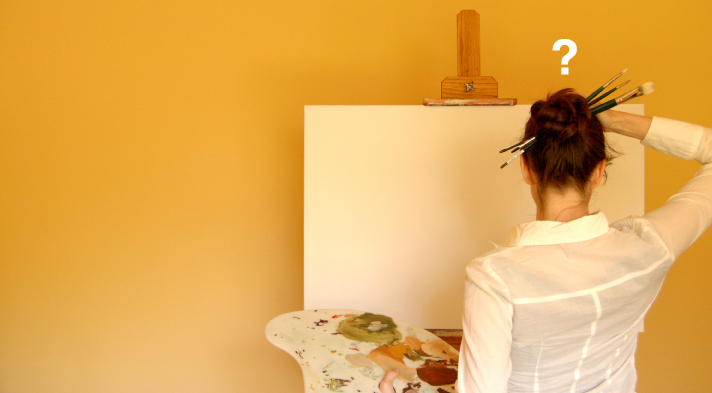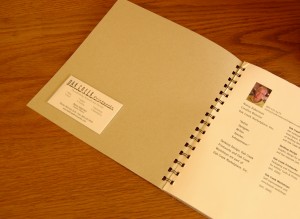 One of the most important items for all artists to have is a business card. It is the best way to market yourself to clients, friends, and new acquaintances. Another crucial item for the working artist is the hard-copy portfolio or “look-book”. Wouldn’t it be nice to include your business card in your look-book in an elegant and professional way without the concern of having it fall out and get lost or damaged? This is why we are now offering a clear plastic protective sleeve designed especially for the business card! It has a double adhesive the back making it easy to attach to any surface and a single opening allowing the option to remove the business card while keeping the sleeve perfectly in place. This little sleeve is a must-have for any professional artist!
One of the most important items for all artists to have is a business card. It is the best way to market yourself to clients, friends, and new acquaintances. Another crucial item for the working artist is the hard-copy portfolio or “look-book”. Wouldn’t it be nice to include your business card in your look-book in an elegant and professional way without the concern of having it fall out and get lost or damaged? This is why we are now offering a clear plastic protective sleeve designed especially for the business card! It has a double adhesive the back making it easy to attach to any surface and a single opening allowing the option to remove the business card while keeping the sleeve perfectly in place. This little sleeve is a must-have for any professional artist!
Monthly Archives: April 2010
Get your business card noticed
By David Heyman
Business cards are such a common marketing tool that many times they lose impact, are easily lost or put in a drawer and the design of many of them is quite forgettable.
Take this under-utilized advertisement of your business to the next level with some simple tips to make sure that no one ever tosses away your business card again:
- Put your cards into a clear business card sleeve. When sealed, this will protect your card from dirt and fingerprints, and ensure that your smooth, plastic coated card stands out in a pile of business cards.
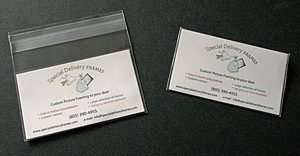
Unsealed and sealed bags with business card
- To make an even bigger impact, use a piece of foam core to back your business card inside a sleeve. This adds depth, and such an inherent value to your card, that no one will think of throwing it away! Continue reading
Crisp creases for handmade greeting cards
By David Heyman
Producing handmade greeting cards is a creative endeavor, whether you make original art on the cards, mount photographs on the front, or run blank cards through your inkjet printer for digital techniques. Whatever method you use, at the end of creating your masterpieces, you end up with needing to fold the cards to produce a finished product.
Here are two tips to help you acheive stress-free and professional results:
- If you are using pre-scored cards, you only have to worry about gettting a crisp crease, as the cards have a measured score line, to ease in folding. A burnishing tool will greatly assist in this process. This lightweight and Continue reading
13 Things to know about Small Business and the Internet
The Internet is a level playing field
Whether your company is big or small you have equal opportunity on the Internet.
Internet is not cumbersome or bureaucratic
Small businesses without many layers of management actually have an advantage over larger competition by nimbly reacting to changing market conditions via the Internet.
Internet is not expensive
Unlike traditional advertising that can require tens of thousands of dollars to make an impact, you merely invest in good website development and keep it current to make an impact on the Internet.
Prominence on the Internet is based on trust
How your website competes on the Internet (its page rank) is based on history (length of time on the WWW), how many visitors are attracted to your content and how many other “trusted or popular” sites yours is linked with.
The Internet is a democracy.
Visitors vote by clicking on your site. Other sites vote for you by
<to read more click here>
Jeanne M. Brown is a writer, publicist, marketing professional, fundraiser and blogger. She develops programs that boost sales and increase product awareness. Visit her at http://www.jeannembrown.blogspot.com/.
Artist’s Block: 10 Techniques To Get You Through
You thought it was just the writers? Not true! Artists get “blocked” too. If you, like many others, find a blank canvas rather daunting to stare at while trying to think up your next subject, here are a couple of techniques to help get your creative juices flowing.
- Research: Start looking for images that you like, or ones that consist of certain elements that you would like to incorporate into your own work. Look up artists that you like and analyze what it is that you find appealing in their works.
- Take Pictures: This is another means research, one that comes directly from you. Taking pictures helps us generate ideas and allows us to experiment without too much effort.
- Sketches: Sketches are also a means of research. Sketch what is in front of you; doodle any ideas that are floating around in your head. The important thing is Continue reading
Design & Advertising Competition: Call for Entries
Communication Arts is having its annual competition for design and advertising! This is one of the most prestigious competitions in the industry of graphic design, and offers tremendous exposure to the selected designers. For information on how to enter, click here.
Easy photo mounting
By David Heyman
One problem that can arise when displaying photographs is the appearance of wrinkles and bubbles in the print over time. This is caused by changes in temperature and humidity affecting the paper, as well as the effects of gravity pulling on different areas of the image to different degrees, causing warping and wrinkles. This can happen whether your photographs are in mats, gallery presentation packages or have been framed.
For a smooth, flawless surface, photographic prints need to be mounted to a sturdy board. While dry mounting produces excellent results, it is expensive and requires large, heavy equipment, or time consuming trips to the custom frame store. An easier method, that you can do yourself at home, is to mount the prints on a self adhesive mounting board, such as Crescent Perfect Mount.
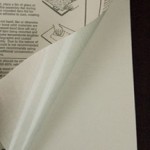 Simply place the board on a flat, clean surface, peel off the liner paper, then place your print squarely on the mounting board. If the print is large you need to start from one side, and work your way down the print, making sure there are no air bubbles trapped underneath the paper. Cover the mounted print with the liner paper, and apply firm pressure, from the center towards the sides, to release any trapped air.
Simply place the board on a flat, clean surface, peel off the liner paper, then place your print squarely on the mounting board. If the print is large you need to start from one side, and work your way down the print, making sure there are no air bubbles trapped underneath the paper. Cover the mounted print with the liner paper, and apply firm pressure, from the center towards the sides, to release any trapped air.
Put a weight on top of the package for 24 hours, and then your print is ready for display.
Research Studio: Art as experience / experience as Art
by Georgia Lange
 At the School of the Art Institute of Chicago, all students in the first year program are required to take a research studio class. These days, it has developed into multiple research studio classes. As a first year student, I chose the research studio entitled “Art as experience / experience as Art.” I will say now that it was a wise choice, as it turned out to be one of the most interesting classes I ever took.
At the School of the Art Institute of Chicago, all students in the first year program are required to take a research studio class. These days, it has developed into multiple research studio classes. As a first year student, I chose the research studio entitled “Art as experience / experience as Art.” I will say now that it was a wise choice, as it turned out to be one of the most interesting classes I ever took.
The idea itself is almost philosophical. Art is an experience in itself. To look at a work of art is to take your mind places where you would never have thought to go, and the journey Continue reading
What is a Protective Closure Sleeve?
By David Heyman
Crystal clear sleeves have an adhesive strip to seal the bags against dust, dirt, bugs and fingerprints, keeping your greeting cards and photographs in pristine condition. This adhesive strip is the key difference in a protective closure style sleeve.
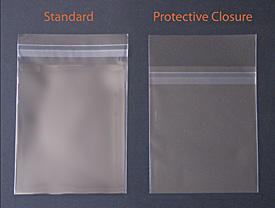
With standard sleeves, this adhesive layer is on the back of the flap. Simply pull off the cellophane liner, fold the flap over and the bag automatically seals. This works well for most uses, as the sleeve is protecting your contents, while allowing for removal of the item if necessary. Your cards or photos can be changed out, as the sleeves can be re-sealed several times. Continue reading
The Unpredictable Pricing of Fine Art – What Artists Need to Know
by Georgia Lange
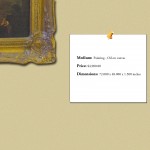 Over the past few months, I have attended many opening (and closing) receptions for art exhibitions at various galleries in the Santa Monica area. Many of the artists displaying their works were new to me. Some were well known to me, though I had never had the honor and privilege of gazing at their original pieces in person before. The most memorable of these artists was Dave McKean and the work he had on display at the Billy Shire Gallery last month. Then there were those artists whose works I had been watching Continue reading
Over the past few months, I have attended many opening (and closing) receptions for art exhibitions at various galleries in the Santa Monica area. Many of the artists displaying their works were new to me. Some were well known to me, though I had never had the honor and privilege of gazing at their original pieces in person before. The most memorable of these artists was Dave McKean and the work he had on display at the Billy Shire Gallery last month. Then there were those artists whose works I had been watching Continue reading


